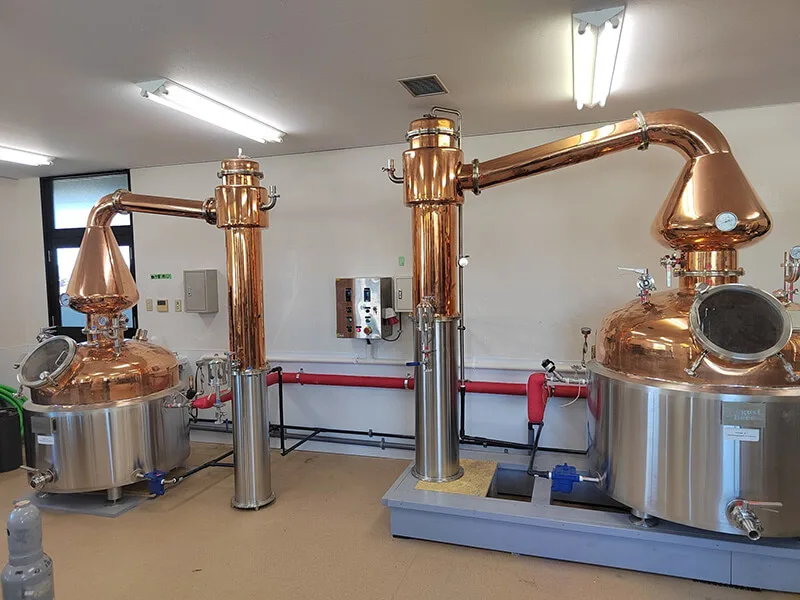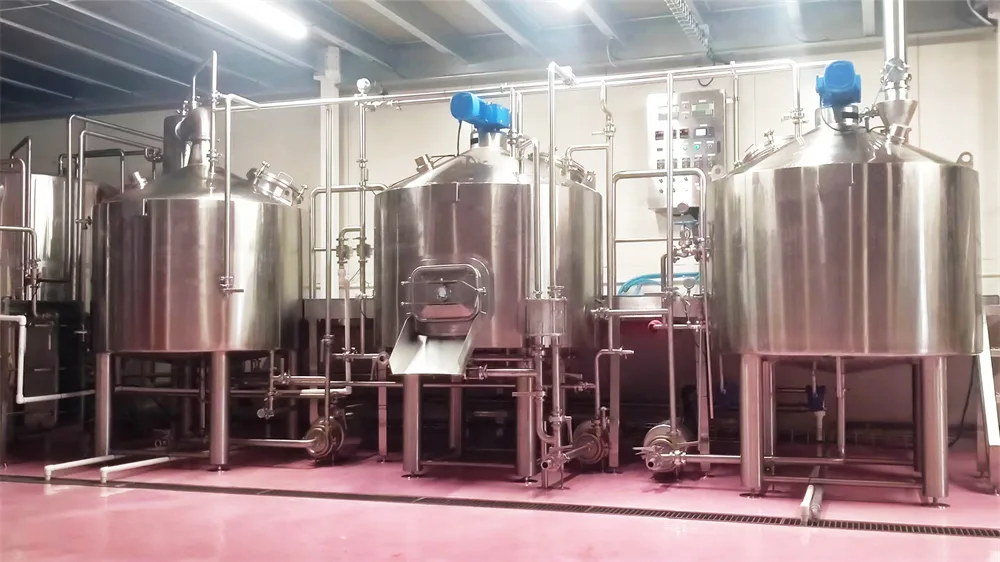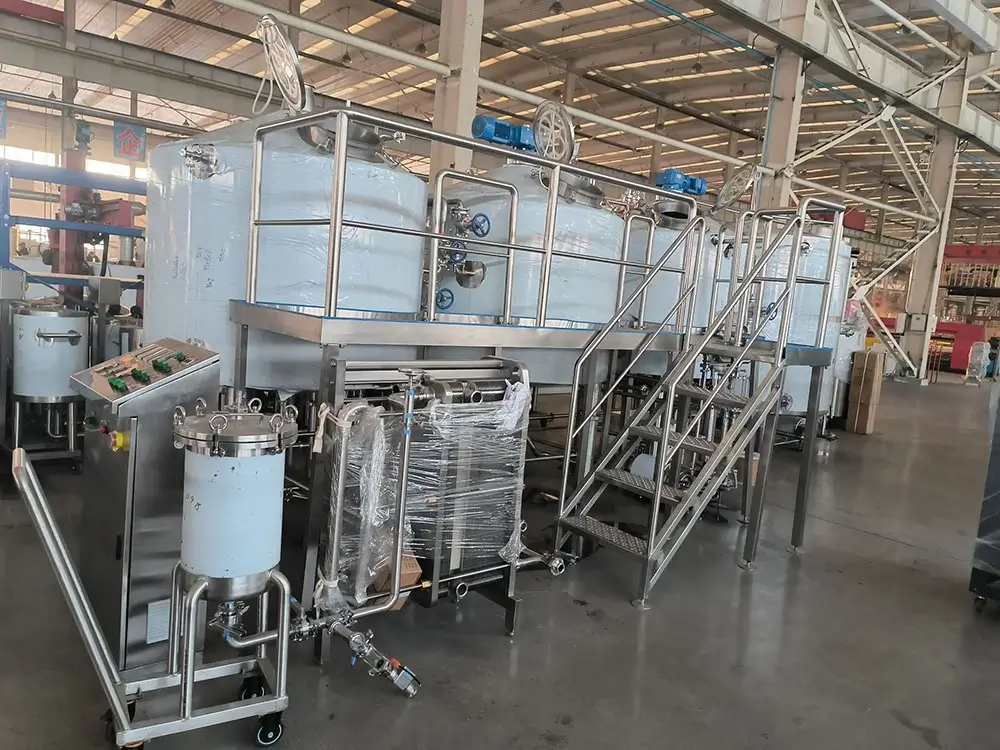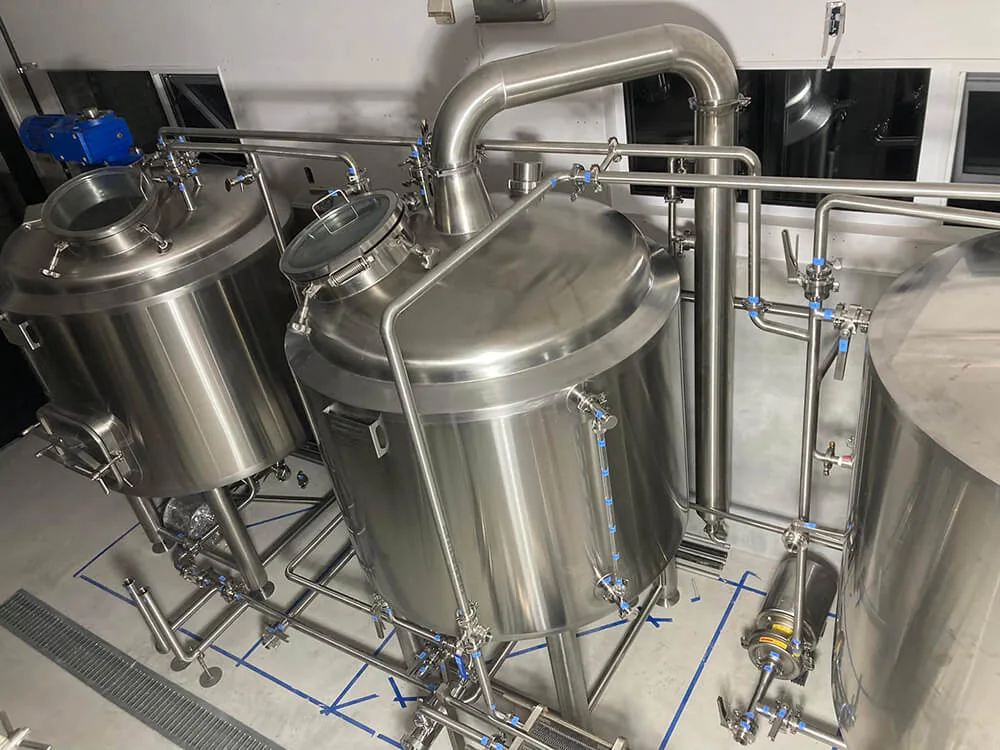In 2024, we partnered with an innovative craft producer in Japan’s Kansai region to design and deliver exactly that: a fully integrated 500L brewing and distillation system. This case study dives into the technical decisions, system architecture, and real-world outcomes that made this project a success—and what it reveals about the future of compact, multi-functional craft production.
Why Combine Brewing and Distilling?
Before jumping into the hardware, it’s worth asking: Why build both systems together?
Feedstock synergy: Spent grain from brewing can be repurposed for certain spirits (e.g., whiskey), reducing waste.
Shared utilities: Glycol chillers, CIP systems, and control infrastructure can serve both processes.
Market agility: With one facility, producers can respond quickly to consumer trends—launching a hazy IPA one season and a botanical gin the next.
For our Japanese client, this hybrid model was essential to their business strategy: a compact urban facility with limited footprint but maximum creative and commercial flexibility.
Core System Specifications
The client’s request was precise and technically demanding:
500L Two-Vessel Brewhouse: MT/KT + LT/WT + HLT
4 × 500L Conical Fermenters
1000L Glycol Chiller Tank
Automated CIP Unit
Digital PLC Control Cabinet
Distillation System:
500L Primary Copper Pot Still
300L Fine Pot Still (with reflux column option)
Let’s break down the engineering choices behind each component—especially the distillery equipment, which was central to the project’s success.
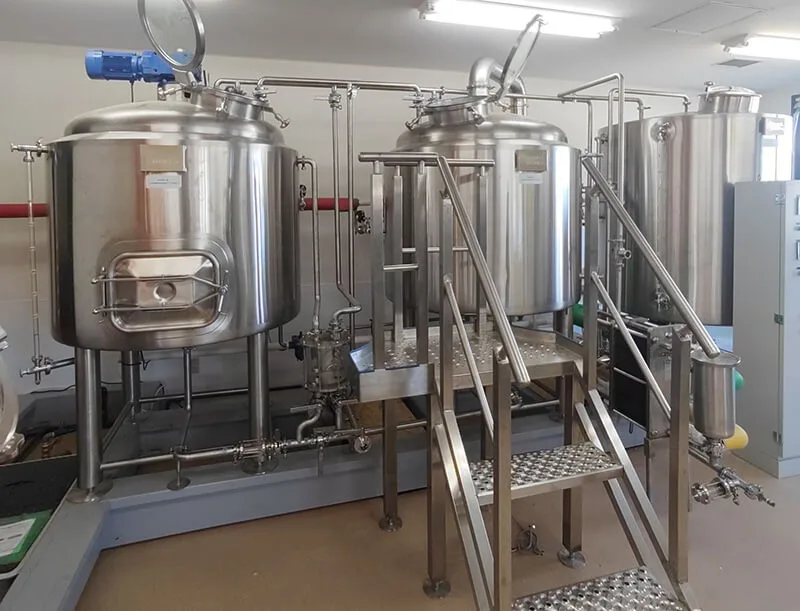
Deep Dive: Distillery Equipment Design & Selection
1. Why a Dual Pot Still Setup?
Many assume a single still is enough—but for a producer aiming at both robust malt spirits (like whiskey) and delicate botanicals (like gin), one size doesn’t fit all.
500L Primary Pot Still:
Made of food-grade copper with stainless steel jacketing for even heating.
Ideal for low-reflux, full-flavor distillations—perfect for whiskey or rum where congeners and character matter.
Equipped with a lyne arm and product condenser optimized for slow, controlled runs.
300L Fine Pot Still:
Smaller volume allows for precision cuts during spirit runs.
Optional reflux column enables higher ABV and cleaner profiles—critical for gin, vodka, or eau-de-vie.
Copper packing inside the column enhances sulfur removal and smoothness.
💡 Technical Tip: Copper isn’t just traditional—it’s functional. It catalyzes the removal of sulfides and other off-flavors. For craft distillers, copper contact surface area directly impacts spirit quality.
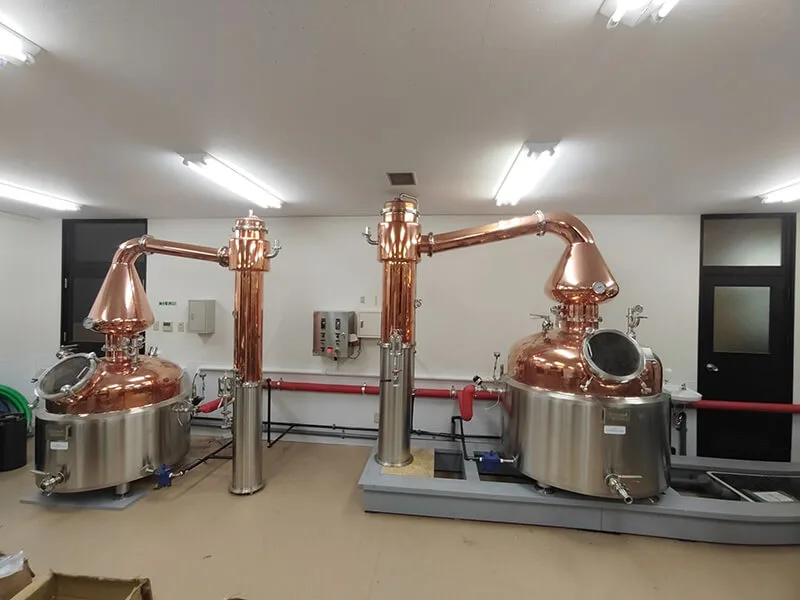
2. Material Standards & Safety Compliance
All distillery equipment was built to:
ASME BPE and PED 2014/68/EU standards (for international compliance)
304/316L stainless steel for tanks and piping
Copper thickness ≥ 2.0mm in still heads and lyne arms
Integrated pressure relief valves, temperature interlocks, and explosion-proof electrical components—critical for Japanese safety regulations
Integrated Brewing & Distilling Workflow
One of the biggest challenges was ensuring the two systems could coexist without interference.
Shared Glycol Loop: The 1000L glycol tank serves both fermenters (for temperature control during beer fermentation) and the distillation condensers (for efficient vapor cooling).
Unified CIP System: A single automated CIP skid cleans brewhouse vessels, fermenters, and distillation condensers using programmable cycles—reducing labor and cross-contamination risk.
Digital Control Cabinet: A single HMI interface allows operators to switch between “Brew Mode” and “Distill Mode,” with pre-loaded recipes, real-time logging, and remote diagnostics.
This integration reduced the client’s footprint by ~30% compared to two standalone systems.
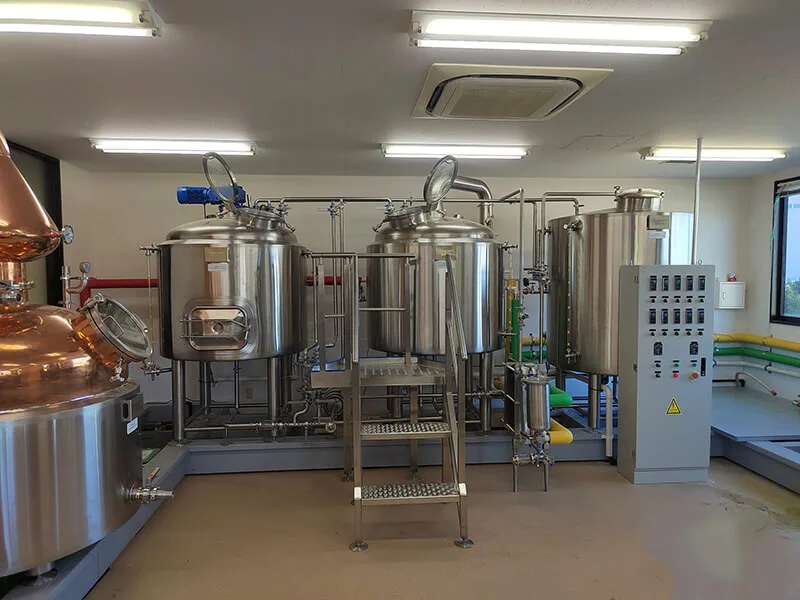
Key Takeaways for Aspiring Craft Producers
Don’t compromise on copper—especially in pot stills. It’s not just aesthetics; it’s chemistry.
Plan for shared utilities early—glycol, steam, and cleaning systems are expensive to retrofit.
Automation pays off—even small producers benefit from digital control for consistency and compliance.
Right-size your stills: A large primary still + small finishing still offers more flexibility than one mid-sized unit.
The Future of Compact Distillery Equipment
As urban craft production grows, demand for modular, multi-functional distillery equipment will rise. Innovations on the horizon include:
Heat recovery systems that reuse vapor condensation energy
AI-assisted cut-point detection using real-time ABV and temperature analytics
Hybrid stills that switch between pot and reflux modes with a valve change
Our Japanese project proves that with thoughtful engineering, even a 500L system can deliver world-class beer and spirits—without sacrificing quality, safety, or scalability.
Looking to build your own hybrid brewhouse and distillery?
We specialize in turnkey solutions for craft producers worldwide. Contact us to discuss your vision—and how the right distillery equipment can bring it to life.

